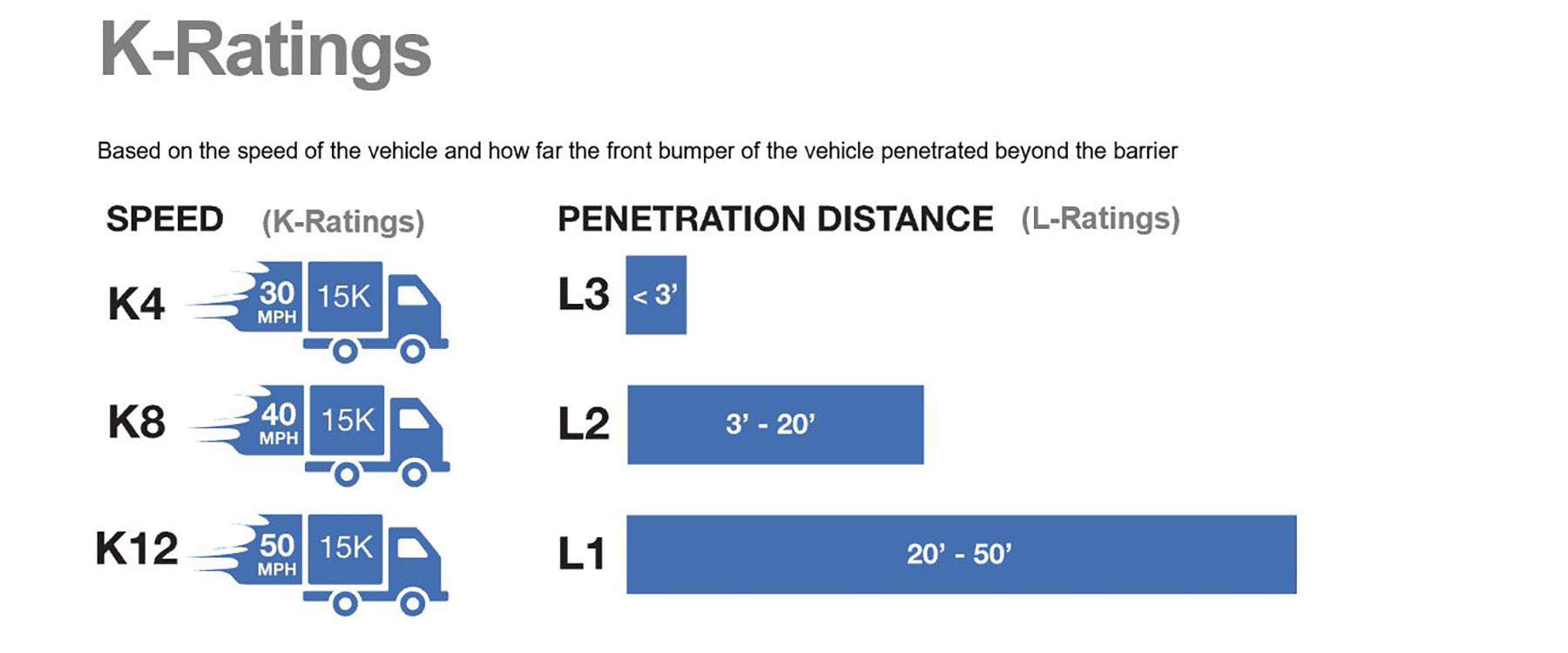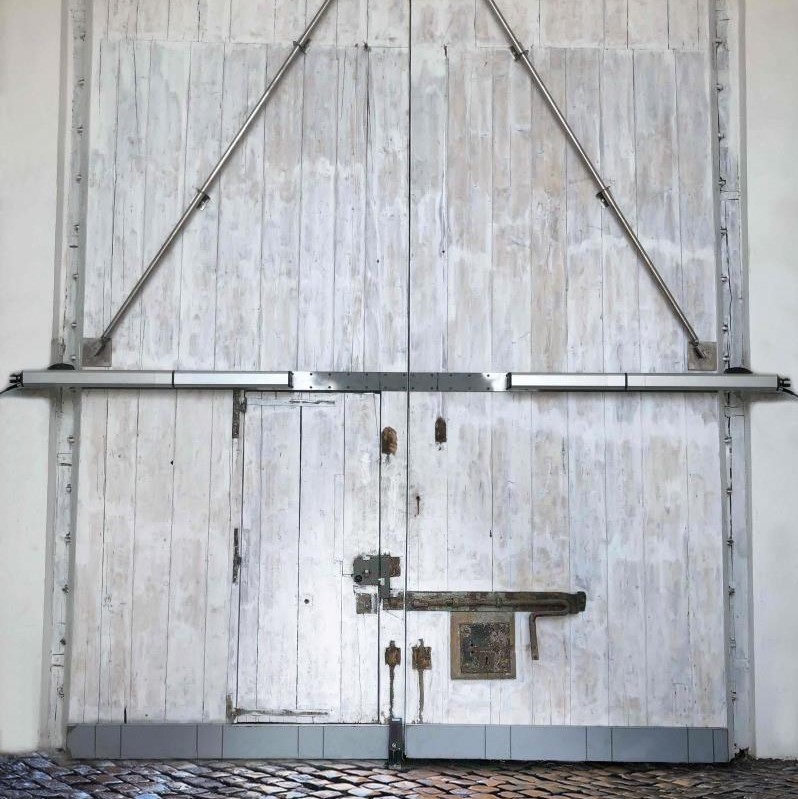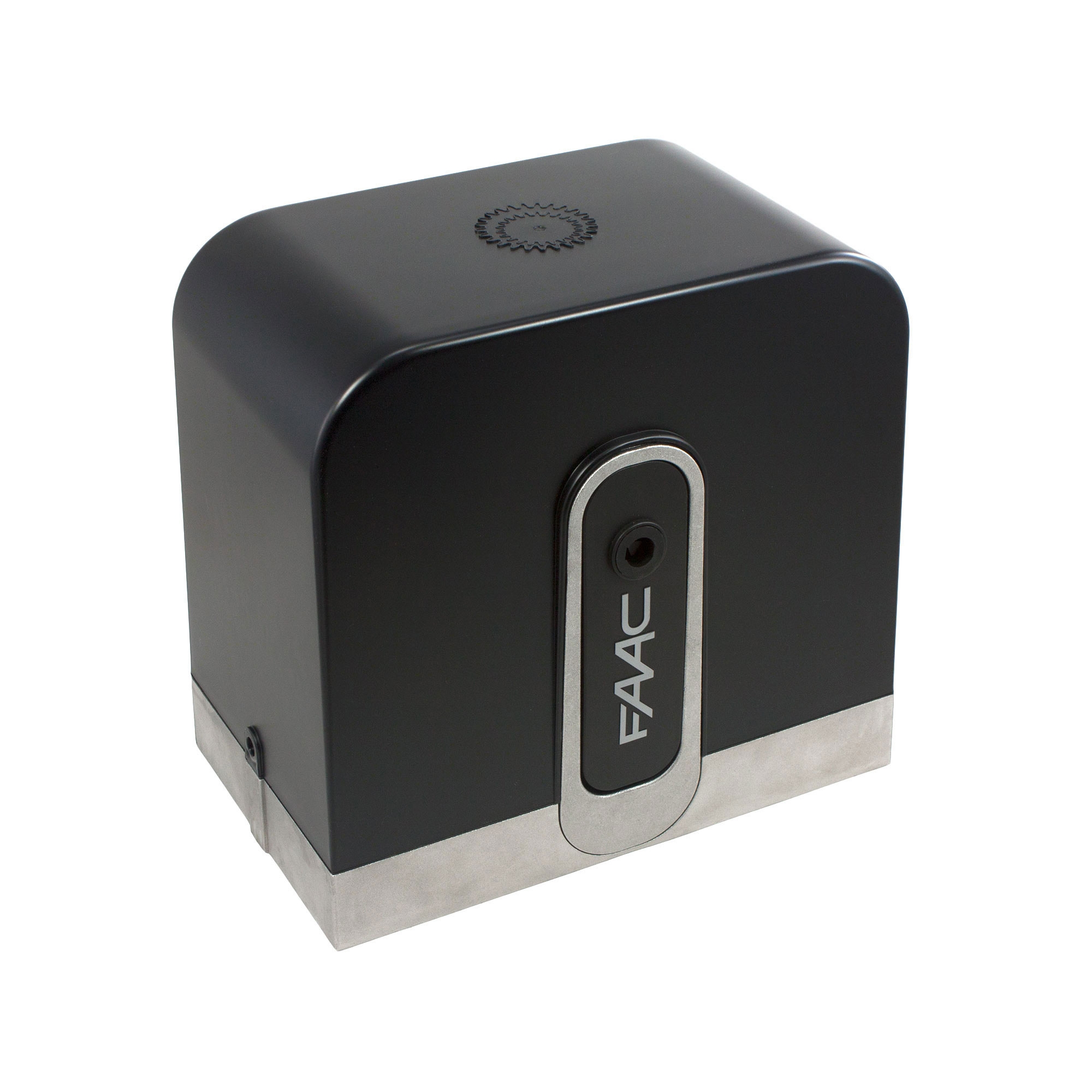Crash Testing Of Vehicle Security Barriers
ASTM F2656 - Standard Test Method For Crash Testing Of Vehicle Security Barriers
US Federal Agencies use real crash test data to certify Security Barrier Performance through highly developed systematic test standards. Originally published by the US Department of Defense in the 1980s, these methods have since replaced ASTM Standards under which all crash tests are tested under the American Society For Testing And Materials International. The certification standards are broken down into ratings that measure vehicle weight, speed, and penetration, through which a rating is established for the Security Barrier.
ASTM Standard measures security barrier vehicle penetration of small passenger cars (2,430 lbs), pickup trucks (5,070 lbs), medium-duty trucks (15,000 lbs), and heavy goods trucks (65,000 lbs) each at 30, 40, and 50 mph. K-Ratings still are used in the industry and can be considered equivalent based on vehicle weight and vehicle speed. The latest testing and ratings are almost interchangeable with K-Ratings however, the distance vehicle traveled beyond the barrier has been revised to a slightly longer distance with penetration ratings ordering in the opposite of the K-Rating / L-Rating trend.
The 3 Major Factors That Determine Crash Ratings
- Vehicle Weight
- Speed Of Traveling Vehicle
- Distance Vehicle Traveled Beyond The Barrier
This rating system is designed to determine which security barriers will withstand rams and crashes, but interpreting the crash ratings requires an understanding of rating terms including K-rating or M-rating along with staying up to date on the current standards and rating systems.

Considering All Ratings For Crash Tested Bollards & Security Barriers
| STANDARD | ASTM | DOS | DOD | DOS |
| F2656-07 | SD-STD-02.01, Rev A, March 2003 | SD-STD-02.01, Rev A, March 2003 With penetration allowance | SD-STD-02.01, April 1985 | |
|---|---|---|---|---|
| Vehicle Speed |
(M) Medium-duty truck (15,000 lbs)
(C) Small passenger car (2,430 lbs)
(PU) Pickup truck (5,070 lbs)
(H) Heavy goods vehicle (65,000 lbs)
|
Medium-duty truck (15,000 lbs)
|
Medium-duty truck (15,000 lbs)
|
Medium-duty truck (15,000 lbs)
|
| Penetration | P1 ≤1 m (3.3 ft) P2 1.01 to 7 m (3.31 to 23.0 ft) P3 7.01 to 30 m (23.1 to 98.4 ft) P4 30 m (98 ft) or greater |
Only <1m penetration allowed | L3 = 3 ft. or less L2 = 3 ft. to 20 ft. L1 = 20 ft. to 50 ft. |
L3 = 3 ft. or less L2 = 3 ft. to 20 ft. L1 = 20 ft. to 50 ft. |
The Old Method: K-Ratings
Crash Ratings through the Department of Defense (DoD) are referred to as K-Ratings which are simply based on how far a 15,000-pound vehicle travels past the security barrier at a certain speed. The vehicles that travel a distance of 50 feet or less past the security barrier pass the test and earn the K-Rating Certification. K-Ratings vary based on the test speeds as follows:
- K4 Crash Rating: Tested at 30 miles per hour.
- K8 Crash Rating: Tested at 40 miles per hour.
- K12 Crash Rating: Tested at 50 miles per hour.
K Crash Ratings are further divided based on how far the front of the testing vehicle traveled beyond the barrier in L Ratings.
- L3 Rating: Testing vehicle traveled 3 feet or less beyond the barrier.
- L2 Rating: Testing vehicle traveled between 3 feet and 20 feet beyond the barrier.
- L1 Rating: Testing vehicle traveled between 20 and 50 feet beyond the barrier.
Interpreting K And L Ratings
Strongest Security Barrier Rating = K12 : L3
A 15,000-pound vehicle moving at 50 miles per hour, penetrated the barrier less than 3 feet.

The Current Method: M-Ratings
Using the American Society For Testing And Materials (ASTM) Standards to replace K-Rating with M-Rating most notably boils down to the difference of how far the vehicle's payload travels beyond the barrier, unlike the K-Rating that measures this distance based on the front of the vehicle. Similar enough to be considered interchangeable, both methods have the same miles per hour testing with the M-Ratings disregarding the further L Rating with a P Rating instead.
M-Ratings for medium-duty trucks at varying testing speeds are as follows:
- M30 Crash Rating: Tested at 30 miles per hour.
- M40 Crash Rating: Tested at 40 miles per hour.
- M50 Crash Rating: Tested at 50 miles per hour.
M-Ratings divided into Penetration Classifications (distance traveled beyond the barrier) are as follows:
- P1 rating: A vehicle traveled 3.3 feet or less.
- P2 rating: A vehicle traveled between 3.31 and 23 feet.
- P3 rating: A vehicle traveled between 23.1 and 98.4 feet.
- P4 rating: A vehicle traveled farther than 98.4 feet.
As aforementioned, the penetration ratings have a slightly longer distance of measurement than the replaced K Rating / L Rating.
Crash Testing Standards Terminology
Tested - Manufacturers can list "crash tested" whether or not the security product passed. A certificate will provide a successful test result if a product was successfully tested at an ISO Accredited Testing Laboratory.
Rated - The security product was tested and tested in aby standard by an accredited facility in abys F2656.
Equivelant - M Ratings and K Ratings are similar, example of equivalent standards: M50 Certified Product Can Also Use K12 Certified Product for the same results.




